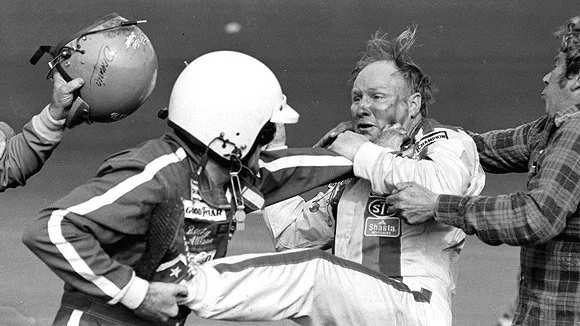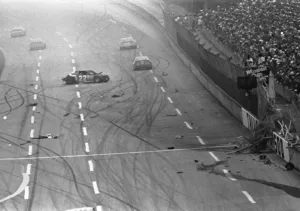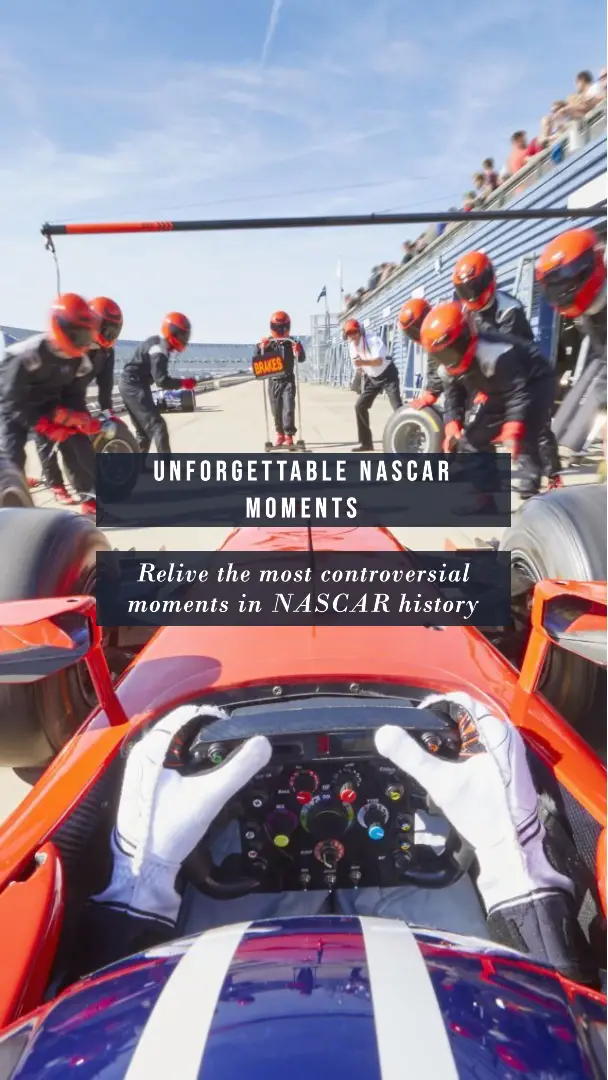NASCAR is one of America’s most popular and exciting motorsports, attracting millions of fans with its high-speed races, thrilling finishes, and colourful personalities. But NASCAR is also no stranger to controversy, as its history is filled with incidents that have sparked debates, disputes, and drama among drivers, teams, officials, and spectators. How did NASCAR evolve from its humble origins as a sport for Southern bootleggers to a multibillion-dollar business? What are some of the factors that contribute to controversies in the sport, such as rules, ethics, safety, and competition? And what are some of the most memorable controversies that have occurred in NASCAR over the years and how have they affected the sport? In this article, we will answer these questions and look at some of the most infamous and controversial moments in stock car racing history.
Historical Context
To understand why NASCAR controversies hold such significance, we must first look back at the history of the sport. NASCAR, born in the post-World War II era, began as a regional racing series and gradually transformed into a national sensation. As it grew, so did the intensity of its controversies.
Memorable NASCAR Controversies
Controversies are a double-edged sword for any sport. They can captivate audiences and boost ratings, but they can also tarnish a sport’s reputation. In NASCAR, memorable controversies have helped shape its identity and keep fans on the edge of their seats.
The 1959 Daytona 500 Photo Finish
The first Daytona 500 race in 1959 was a historic event that marked the debut of Daytona International Speedway, a massive 2.5-mile oval track that was the fastest and largest in the world at the time. The race also ended in a historic photo finish, as Lee Petty and Johnny Beauchamp crossed the line side by side, with no clear winner. Beauchamp was initially declared the winner by NASCAR, but Petty protested the result, claiming that he had edged out Beauchamp by a few inches. For three days, NASCAR reviewed the film footage and interviewed witnesses, before finally announcing that Petty was the rightful winner of the inaugural Daytona 500.

The 1964 Jacksonville 200 Ban
In 1964, NASCAR faced a major challenge from Chrysler, one of its main manufacturers, who had developed a powerful new engine called the Hemi. The Hemi engine gave Chrysler drivers a significant advantage over their competitors, as they dominated the first two races of the season. NASCAR decided to ban the Hemi engine before the third race, the Jacksonville 200, citing safety and competition concerns. However, this decision angered Chrysler and its drivers, who boycotted the race in protest. Only seven cars entered the Jacksonville 200, which was won by Richard Petty, one of the few Chrysler drivers who participated. NASCAR later reversed its decision and allowed the Hemi engine to compete, but only after imposing a weight penalty on Chrysler cars.
The 1979 Daytona 500 Brawl
The 1979 Daytona 500 was a landmark race for NASCAR, as it was the first to be broadcast live in its entirety on national television. The race also featured one of the most dramatic and infamous finishes in NASCAR history, as Cale Yarborough and Donnie Allison crashed on the final lap while battling for the lead. The crash allowed Richard Petty to pass them and win his sixth Daytona 500. However, the drama did not end there, as Yarborough and Allison got out of their wrecked cars and started fighting on the infield grass. Bobby Allison, Donnie’s brother, arrived at the scene and joined the brawl, which was captured by the TV cameras and watched by millions of viewers. The fight made headlines across the country and helped boost NASCAR’s popularity and exposure.

The 1987 Winston 500 Crash
One of the most terrifying and spectacular crashes in NASCAR history occurred during the 1987 Winston 500 at Talladega Superspeedway, another huge and fast track similar to Daytona. Bobby Allison, a veteran driver and former champion, was running near the front of the pack when his car blew a tire and became airborne. His car flew into the catch fence that separated the track from the grandstands, ripping apart a large section of it. The crash injured several spectators and caused a red flag that stopped the race for over two hours. The incident prompted NASCAR to introduce restrictor plates to reduce speeds and prevent similar accidents at Talladega and Dayton

The 1994 Daytona 500 Black Flag
Dale Earnhardt was one of NASCAR’s greatest and most popular drivers, but he also had a reputation for being aggressive and controversial on the track. He earned his nickname “The Intimidator” for his willingness to bump and spin out his rivals to win races. However, one of his most controversial moves came during the 1994 Daytona 500, when he was leading with four laps to go. Earnhardt passed below the yellow line on the backstretch, which was prohibited by NASCAR rules. NASCAR penalized him for his illegal pass and black-flagged him, forcing him to serve a stop-and-go penalty on pit road. Earnhardt protested the call and refused to pit for two laps, before finally complying with NASCAR’s order. He finished second behind Sterling Marlin, who won his first Daytona 500.
The 2003 Ford 200 Spin
The truck series is one of NASCAR’s three national series, along with the Cup series and the Xfinity series. The truck series features pickup trucks instead of cars and often produces close and competitive racing. The 2003 Ford 200 was the final race of the truck series season at Homestead-Miami Speedway, and it decided the championship between Brendan Gaughan and Travis Kvapil. Gaughan was leading the race and the points standings with four laps to go when he was spun out by Marty Houston on the final restart. Houston was driving for Ultra Motorsports, which was Kvapil’s team. Many fans suspected that Houston’s spin was intentional and orchestrated by Ultra Motorsports to help Kvapil win the race and the championship by six points over Gaughan
Controversies Beyond the Track
NASCAR personalities have occasionally found themselves in hot water off the track. Scandals involving DUIs, legal battles, and social media mishaps have added another layer of intrigue to the sport.
The Role of Social Media
In the age of social media, controversies in NASCAR spread like wildfire. Twitter wars, leaked videos, and drivers venting their frustrations online have given fans an unprecedented peek behind the curtain.
NASCAR’s Handling of Controversies
How NASCAR addresses and manages controversies has evolved over the years. The sport’s response to incidents, from fines and suspensions to reconciliation efforts, reflects its commitment to maintaining integrity.
Fan Reactions and Divisions
NASCAR controversies often lead to passionate debates among fans. While some see controversy as a necessary spice, others argue that it detracts from the sport’s core values. These divisions continue to shape the fan experience.
Conclusion
Nascar controversies are part of the sport’s history and culture, as they reflect the passion, emotion, and risk that drivers, teams, officials, and fans experience in every race. Some controversies are more memorable than others, as they have lasting impacts on the sport and its participants. A few controversies are more positive than others, as they create opportunities for change, improvement, or innovation. Some controversies are more negative than others, as they create damage, loss, or harm.
What do you think about Nascar controversies? Do you enjoy them or hate them? As a fan you think they are good or bad for the sport? Do you have any favourite or least favourite controversies? Share your thoughts and opinions with us in the comments section below. Thank you for reading!

